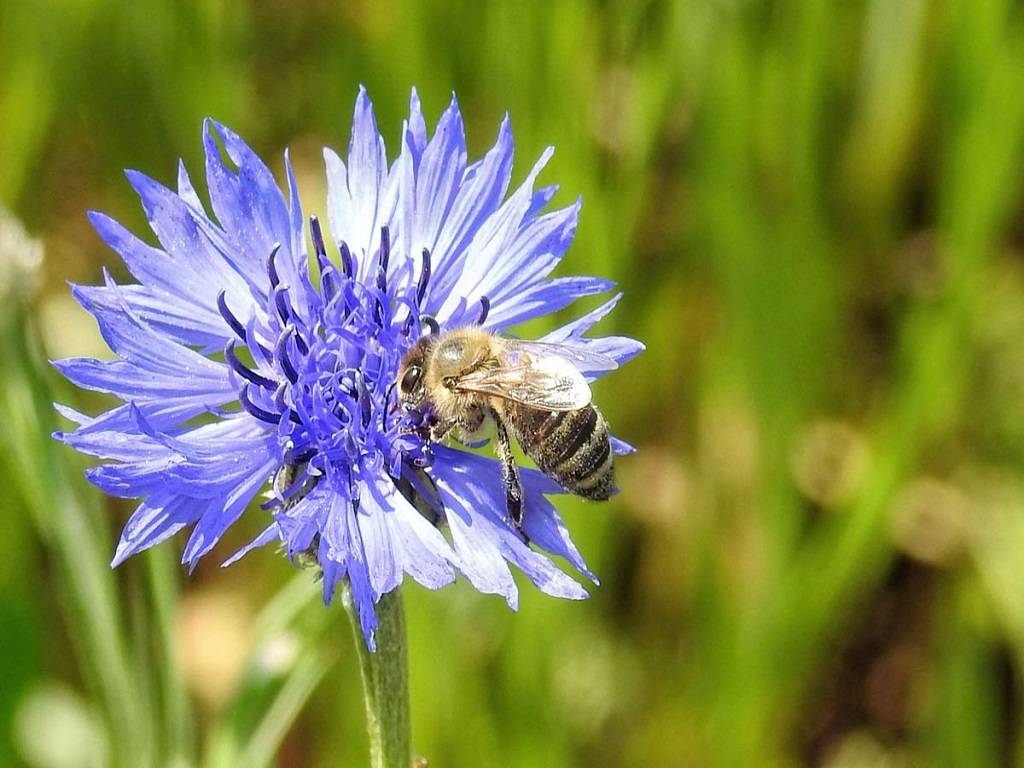
Cornflower, (Centaurea cyanus), also called bachelor’s button, herbaceous annual plant of the Asteraceae family. This herb is native to Europe, although it is widely cultivated as a garden plant in North America.
Outside of its original habitat, it has been naturalized as an invasive species. The bracts that encircle the delicate papery discs of Cornflowers bloom atop thin stems of slim Gray-green leaves. In all growing zones, mature plants can grow up to 48 inches tall and 12 inches wide. Flowers are dense and bright blue and continue from spring until July. Additionally, this species has several cultivars with pink, white, and scarlet blooms.
How to Care for Cornflower:
Cornflower is a versatile plant with many uses both inside and outside the home. The nectar content will attract pollinators that increase the productivity of tomatoes, squash, and other plants that rely on them, so think about including it in an ornamental vegetable garden. Add cornflower to a wildflower garden to attract bees and butterflies. Alternately, include blue cornflower along with annuals like orange cosmos or yellow marigolds in a cutting garden.
Cornflower, like most of the common annuals, can be bought as a nursery start, but it is also quite simple to grow from seed. Grow it alongside other sturdy perennials that will serve as natural stem supports, like rudbeckia or coneflower. You can also stake the plant to avoid flopping.
From May to mid-July, cornflowers generally bloom for about 10 weeks, but by deadheading spent flowers, you can extend the bloom period. The flower's bloom time can be increased by sowing the seeds at intervals of every two weeks. An excellent dried or cut flower is the cornflower. Cut the flowers at their peak before they begin to wilt.
Requirements for the Cultivation of Cornflower:
Soil
Cornflower grows best in rich, well-drained garden soil, toward the alkaline side, and has a pH of 7.2 to 7.8 is ideal for cornflower growth. Crushed limestone should be added to your garden beds if your soil tends to be acidic.
Light
Even though cornflower prefers full sun, it can withstand some midday shadow, especially in the sweltering summer months. The plant becomes leggy and more prone to flopping when it spends the entire day in the shade.
Temperature and Humidity
Cornflowers can tolerate mild freezing as well as a hot day in the summer. The ideal temperature range for this plant is 15 to 26 degrees Celsius, however, it may require 29 to 35 degrees to reach flowering maturity. A humidity range of 30 to 50 percent on average is ideal for cornflower growth. However, during periods of high humidity, keep a close eye on your garden because this plant is susceptible to fungus disease.
Fertilizer
If your soil is poor, fertilize your cornflowers once a month with compost tea or diluted liquid manure. Beginning in the early spring when the young plants are 6 inches tall, fertilizer should be done continuously through the summer. You don't even need to feed your flowers if you have rich soil. Before planting, adding one or two bags of compost to the soil is frequently sufficient for the entire growing season.
How to Propagate Cornflower from Seed:
-
After the last frost in late spring, directly sow seeds in the garden. (Don't worry about planting too early; Mother Nature will tell when the seeds will sprout.)
-
Until germination occurs, cover the seeds with 1/2 inch of soil and maintain a moist seedbed with water (usually within 10 days in warm temperature).
-
To boost the plants' vitality and blooming after they have sprouted, thin the seedlings.
To ensure early flowering, you can also start seeds indoors. Use a seed-starter mix in a seedling tray and carry out this procedure six to eight weeks before the last expected frost. When the seedlings sprout, keep the soil warm and moist. After that, grow them in a bright area or a sunny window until it's safe to transplant them outside.











